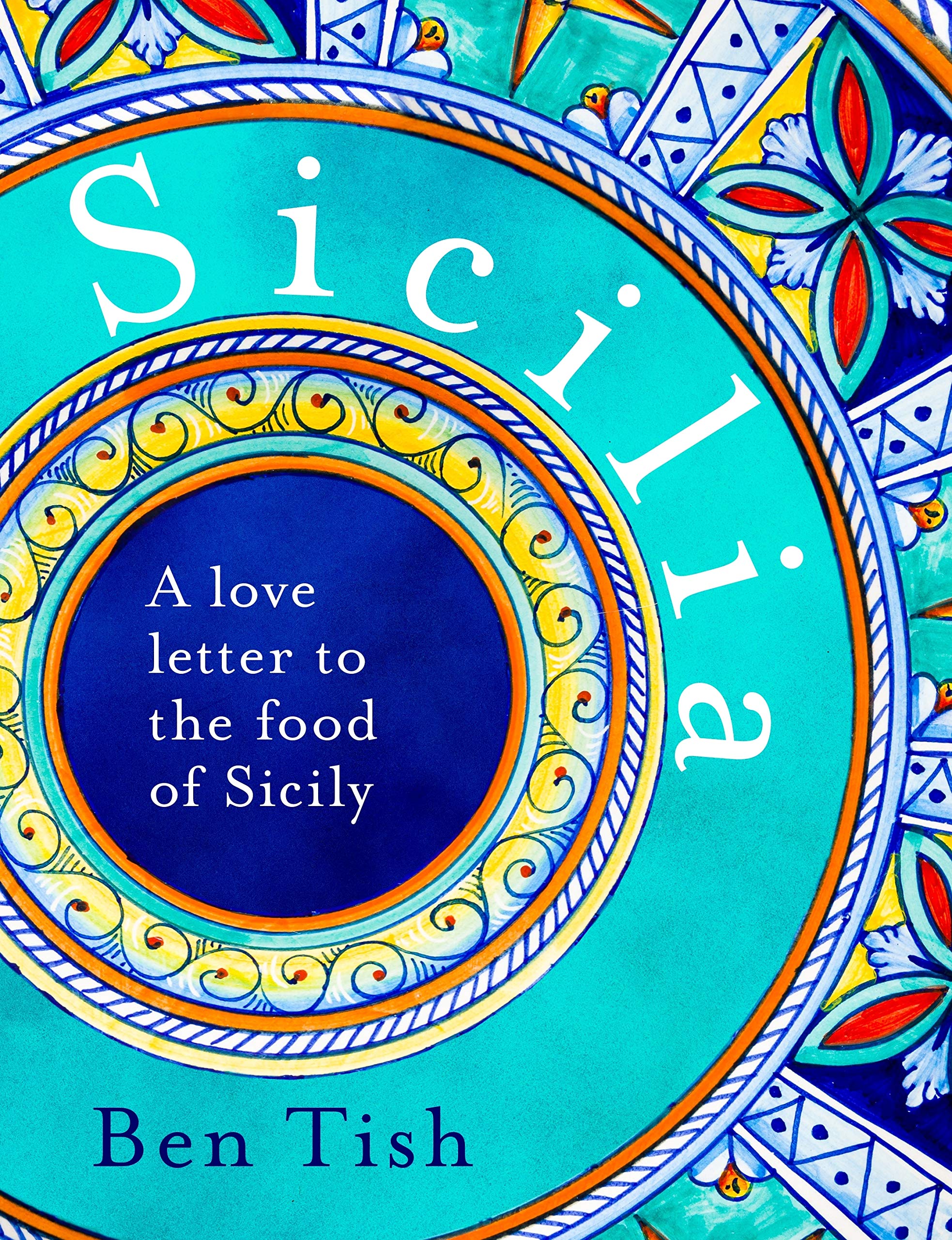
Sicilia: A Love Letter to the Food of Sicily
Tom Verde
Ben Tish.
Bloomsbury, 2021.
“The Arab influence is still seen today, particularly with Sicilian cuisine – almonds, saffron, oranges, pistachio and pomegranates amongst many others bear witness to their influence.”
—Excerpt from introduction to Sicilia, by Ben Tish
It’s hard to have a bad meal in Italy, it’s been said. The same is true of using this colorful cookbook celebrating Sicily’s culinary past, particularly its Arab legacies. Both the method of deep-frying and the popular ingredients of rice, sugar and oranges (which meet up in rice fritters with orange-blossom honey) are mainstays of the Sicilian diet traceable to the island’s Arab period (827-902 CE). Similarly, the whole-wheat-and-semolina sourdough bread called mafalda, often made in the shape of a crown, is likely of Arab origin. Watermelon jelly with jasmine, chocolate and pistachios—a molded, pudding-like dessert that “would have been the height of sophistication, prepared by skilled Arab chefs”—might intimidate the home cook, yet the book also features plenty of easy-to-prepare, peasant-inspired dishes that equally defined Sicily’s Arab-era diet, such as braised chickpeas and borlotti beans with kale pesto.
You may also be interested in...

Noorjahan Bose: A Life of Learning
Taking inspiration from her now-deceased mother, Noorjahan Bose, a daughter of the Agunmukha, Bangladesh, now shifts her energy toward empowering other daughters.
Untold Stories of British Muslim Women as Agents of Change
Sociologist Sariya Cheruvallil-Contractor and historian Jamie Gilham present 100 years of Muslim women who have contributed to the dynamism of Islam in Britain.
The Great British Bake Off Winner Nadiya Hussain Gathers Global Recipes in Culinary Celebration of Ramadan
Nadiya Hussain's diverse recipes highlight the global unity of Muslim cultures and cuisines.